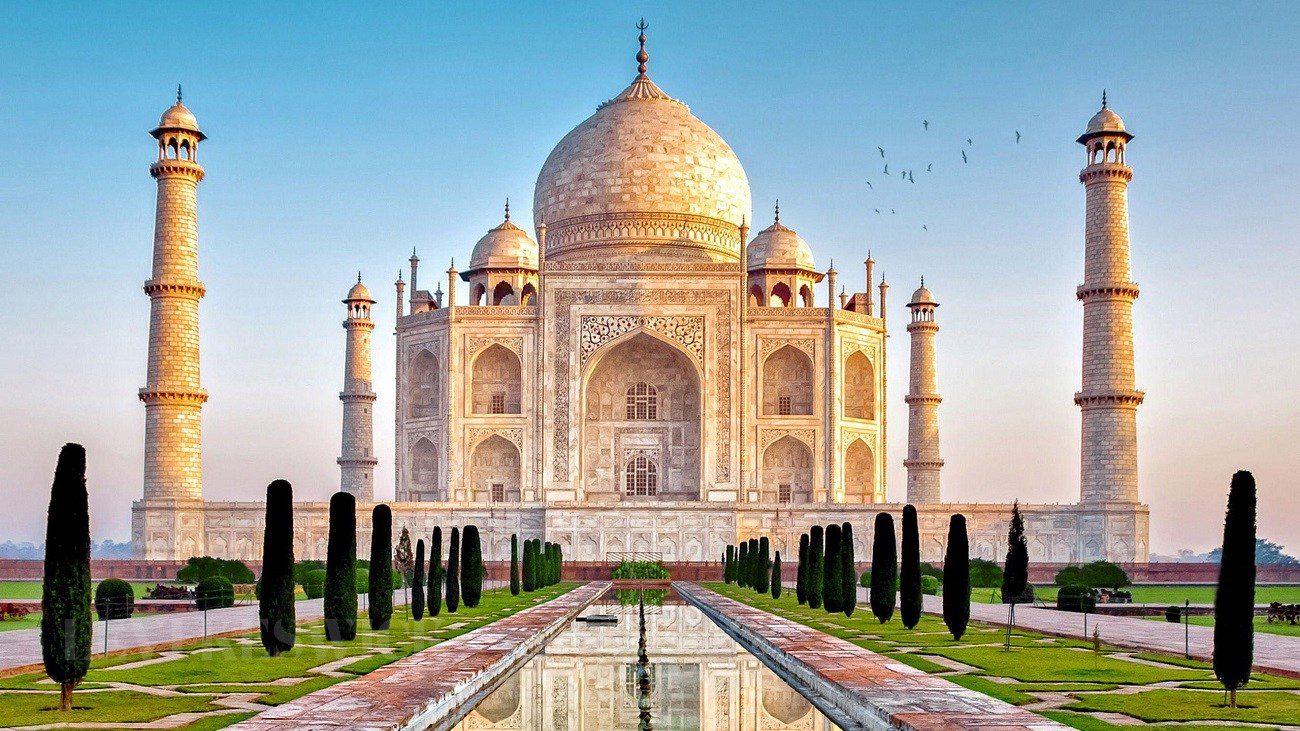Tips on Business Etiquette in India The Land of Head Nodders Once you have opened your business in India, you will soon realize that India is not a country you can conduct business the way you havedone in the developed world. You will have to learn and follow certain rules and tips on business etiquette in India. Please keep in mind that these are only a few pointers to help you understand the expected business etiquette in India. It is not a training on business conduct. Business Face Saving In India is a great thing. I spoke to a lady the other day, she was in charge of an industrial safety program in TATA and she told me that they were trying to teach our workers safety techniques that were taught in the developed world. Mind you she talked about a factory that employs more than ten thousand people. She told me, they got into all sorts of situations until they figured out how to make their workers work safely. She said that they were very eager to learn and as soon as they saw the why behind the technique, they adapted to it very quickly. We Indians are an intelligent lot, like her we want to know the why behind the technique. If you give us a reason, a logic, a reason to follow a technique, we will do it. We are great followers, please understand that we Indian trainees only learn when they can see the value in it, we are not there yet and we definitely need some training in following safety procedures. It is about time you gave us a reason for everything.
The bottom line is that we as Indians are looking for some logical reason to follow the techniques you are teaching us. Explain to us why you are teaching it, so they can see the value. Please, don’t imagine that we need training in following safety rules blindly, please understand that we need to know why we are following it in order for us to follow it. This goes for everything in the business arena. We want to look beyond the job you are giving us. We need to know the why behind the job. Look at it this way, if we are not happy with the job, it is more important to us that you explain it to us, than it is to you that we do it the way it is. A smart boss will try to understand this and will try to explain it, not expect us Indians to fly from the half built wing of an airplane without learning why it is safer to fly from the said wing. It is the same way with business. Look at it from our perspective, if we do not see any value in working the job the way you want, besides the way we normally do, we will expect you to explain to us why it is important to do the job your way. Business Ethics To improve business etiquette in India, one needs to understand the values and ethics that we Indians hold dear. Let me just mention a few, with the hope that after reading this, you will understand and perhaps teach your Indian workers the values you hold dear at work. First of all, there is no such thing as loyalty in a competitive environment. The only loyalty is as a person, not as a competitor. If you are looking for loyalty, you will find obedience but never loyalty. That is why Indians never hire or support their own.
They always hire and support somebody from outside the sphere of competition. That is why we Indians are not that loyal to our own, we expect that if the outsider is a better person, he should get the job. So that is the value, we have high expectations of loyalty. Get to know your workers, as people, as human beings. That is very important. If you fail to realize that point, then, any wrongdoing you see in them is nothing but your misinterpretation. Until you make friends with your Indian workers you will not be able to understand them. Our values are different, in fact we have very different values. We are not as liberal minded as others in the world, however, once you get to know us, we are very normal and we have high values but like any other human being, we have our bad points too. We need you to treat us as human beings, as friends and we will reciprocate with respect. You will not find anyone more loyal than an Indian when he is working for you. People are important to us. We value them. We like to be with people. It is an important part of our culture. Man is not an island and we are not trying to work our way to break away from the society. We want to socialize at work. When we are socializing we are out of work and not giving value. However, when you ask me about value in socializing, I guess it is one of many ways to deliver value.
Greetings in india Please do the following when greeting Indians: Note :1. Good Morning is not in common usage. Its good morning.
- Be very careful with your hand gestures. We are very modest, you will most likely be looked upon as a hand or sexual pervert if you show your palm up to receive a hand shake. It will be misinterpreted. Please note that handshakes are not as common as in the rest of the world. 3. When you use the left hand to receive something, please do not look at the left hand as it will be interpreted as being offered to you for sexual favors. When we have to give you something, mainly business cards, we will use the right hand. However, when we have to receive something with our left hand, it is interpreted as our left hand being used to give you sexual favors. Once again, please, don’t hand anything to an Indian with your left hand.
- Please do not stare at an Indian in his face. There is definitely something wrong. You have been identified as a sexual pervert at the least and you may be assumed to be a terrorist just looking to do some harm. It is better to smile. Treat the Indian as a friend and the trust will come. While shaking hands, please avoid touching your thumb with your forefinger. Remember to smile. Business cards Business cards are meant to be disposed off after reading. Thats it. You can carry as many business cards you want. There is a place for them, it is called the garbage can. In India, we do not give out cards/ visiting cards like you do in the west. This is not necessary as it is customary. Business cards are meant to be disposed off after reading. They are not an advertisement to be carried around. Business card etiquette in India Ask them for their business card with your left hand and you take it with your right hand. You may offer the card to the person with your left hand. Our personal cards are usually given with the left hand and received with the right hand. You may also offer a business card with both your hands; however, in most cases the business card is offered with the left hand and received with the right hand. If he or she offers you his/her card first, just take the card and start reading it unless its an overnight meet, then offer your card, if possible at the time of departure. When you are on the streets, there is no need to offer your card to everyone. If you are doing business, telephone or casual you will offer the business card at the appropriate time. Indians generally do not give their business cards to their friends. If it is provided, it is only after an invitation or an offer is given. Remember, if you are a man, it is better for you to hold the card by standing up. If you are a lady, hold the card by sitting down. Do not touch a card with your thumb. When you are going through the card, remember that it is given only to be looked at. Keep it as clean as possible. Also, note that putting it in your shirt pocket is a big no-no. It should be kept by the side of the table, or by your side. Notice also the importance of the name of the person on the card. Remember to keep it in a place where it is readable. It is very rude not to look at a business card. If you do not read it, you are giving a very wrong impression and if you want to give an impression of rudeness, then carry your reading glasses and read it. Make it a point to memorize the name when you are shaking hands, then get rid of it. Reading business cards in detail is a good practice. It will help you understand the way a company has evolved. Contents of a business card in India Personal details
Most personal details, including name, address, mobile number, fax number, e-mail and website will be displayed. A full designation will be given if there are three or more members in the parent organization.
Qualification, Designation, Experience and Office Location
You will know the full designation and the experience of the person at a glance. Also, most people have office locations mentioned on their cards nowadays.
The logo of the company will also be there.
A dotted C with the initials of the company will also be written.
Vise President / Vice Chairman
Some companies have the office of the parties in detail. Some important symbols will also be mentioned.
We do not have designations like DMI/CM here.
The designations are not mentioned in full, but if required they can be got from the relevant department.
Business Card Etiquette in India
Business cards are very common all over the world but their use in India varies from place to place.
Business cards are used a lot in the cities where the members of a given business community stick together and interact. But the cities are not more than 10% of the country as a whole. Members from the same profession in the other 90% of the country do not have business cards. In a small village, every person is known to every other person and if you go to a shop to buy something, you will be asked where you live so that the shopkeeper can remember you and you will be asked to the shopkeeper’s house so that a deal can be worked out.
Generally, we have a “Seniority-Friendship-Look-Look-Look” kind of hierarchy in our society and also in business. So, if you are a new person and want to find out who’s senior to whom, please look at the last names. Professionals of the same family need not have last names. For example, some of the most common last names are: Desai, Mehta, Patel, Shah, Thakker, etc.
In case you see two professionals together whose last names differ then you can be sure they are just very good friends. We are very conservative people and it is very rare to find members of the same family in any profession.
You must learn to read a business card in order to use it properly.
The first thing to remember is that the name on the last card is the most important person in the hierarchy. The last name is very important in Indian society.
Given name or first name: The person’s first name is not mentioned in full. Only the first initial is shown. For example, say, Mr. X’s full name is Soopalak Choudhari. Mr. X’s business card will have “S” as the first initial on the reverse of the card.
The name is written in Western letters with the person’s surname in capital letters. Some people also use the abbreviated form — for instance, Mr. X’s full name might be written as “S.C.” while Mr. Y’s full name may be written as “J.Y.”
Address: In India, the address is written as the name of the street, the line number and the locality. In Mr. X’s case, his business card will have only his name, his designation and his designation, as Mr. X is just the most important person. His business card will not mention his complete address like the street name, the line number and the locality. If Mr. X’s card had mentioned his complete address, it would have looked like this: “S.C. Soopalak Choudhari, X Corporation, Mango Lane, Bandra (W), Mumbai (Maharashtra) 400050.”
Designation: The person’s designation is not mentioned in full. Only the first initials of the designation are mentioned. For example, Mr. Y is an M.B.A. in electronic conduct, so his business card will have “MBA” as the first initials of the designation on the card.
MBA: Management course
M.B.A: Master of Business Administration
PGDM: Post Graduate Diploma in Management
MIC: Master of International Commerce
MICM: Master of International Commerce and Management
B.E: Bachelor of Electronics (Electronics is an additional subject in this degree course)
M.E: Master of Electronics
B.A: Bachelor of Arts
B.Com: Bachelor of Commerce
B.Sc: Bachelor of Science
M.Sc: Master of Science
MCA: Master of Computer Application
M.E: Master of Electrical Engg.
M.Tech: Master of Technology
MA: Master of Arts
MBBS: Bachelor of Medicine & Bachelor of Surgery (In medicine)
MS: Master of Surgery
M.Ch: Master of Surgery
MDS: Master of Dental Surgery
M.S: Master of Surgery
M.D: Master of Dental Sciences
M.D.S: Master of Dental Surgery
LLB: Bachelor of Law (In law)
LLM: Master of Law
LLB: Bachelor of Law
The given designation is abbreviated. For example, “P.C.” may indicate the partner of a major firm. “Sr. Appr.” may indicate the in-house consultant. “D.P.T.” might indicate the director of a public sector company. “Indian Oil Sales Executive” might indicate the sales executive working with the dealer department of Indian Oil Corporation.
Indian Business Law
Any Business Owner Must Know These 3 Things!
Both male and female professions are indicated by the word “Mr.” or “Mrs.” respectively and not the name of the profession. Mrs. Lakshmi Thakker therefore indicates the female partner of the Thakker family. No individual’s wife would be indicated as Mrs. A. Thakker, as any other person might use the title of ‘Mrs.’ A man’s name in such a case would be Mr. A. Thakker.
“Visit Us at:” or “Call Us at:” If someone has his business card printed like this on the reverse of his card, it means that he expects you to visit his shop, office or house. He keeps his cards in stationery shops, in offices, in the waiting rooms of insurance companies, at railway stations or at bus stands.
“Call:” If someone has his business card printed like this on the reverse of his card, it means that he expects you to call him. This means that you have to see him and talk to him over the phone as he is very busy.
“Welcome to:” If someone has his business card printed like this on the reverse of his card, it means that he expects a visit from you. It is not enough just to call on him, you have to see him and talk to him. He will ask you to come to a shop he owns, or to his office, or to his house.
In the smaller towns and cities, business is done in a community’s common interest. A business card issued from a group will have the name of the senior-most person first, followed by the designation and the address of the group.
The figure of Mr. X on his business card means that one Mr. X knew two other Mr. X’s before him, who both have already passed away. Mr. X will have the first six letters of his full name on his business card. The city name is merely mentioned to show the province and state.
“Call Us at:” If a business card has this written on the reverse, it means the person is expecting a call. The person will be busy and will be accessible only on the telephone.
“Call:” If a business card has this written on the reverse, it means the person expects a call, but is unusually active and accessible. Keep in mind that every single card has a
function. That means that the way a business card is written is a clear indicator of how the person expects his call to be accepted.
“Please Do Not Call:” If a business card has this written on the reverse, it means the person is very, very busy and hopes that he will not receive any calls.
“Welcome:” If a business card has this written on the reverse, it means the person wants you to visit him in his office or shop. This may mean that the person meets people in his office only.
The hierarchy of a business card is as follows:
- Partner: General Partner
- Director: Managing Director, Company Secretary, Director (and any other titles used in a company)
- Departmental head: The departmental heads (such as Accounts or HR) come next.
- Junior staff: Staff come last.
There is not a single instance where two partners are working together. The one who is the most senior has the title of ‘Partner’. The junior partners fall in the hierarchy.
An office’s business card always has the title of the oldest member of the family.
It is very important that you use the same amount of word as has been used in the person’s business card.








